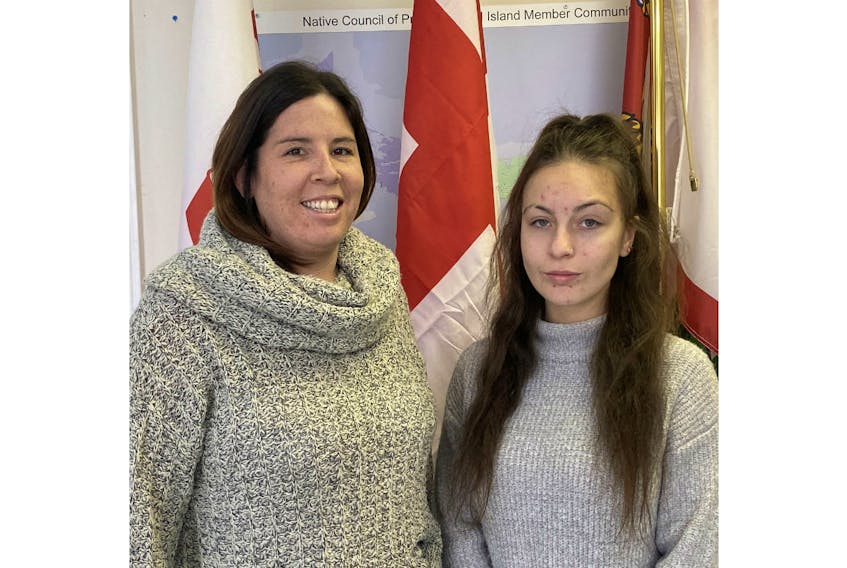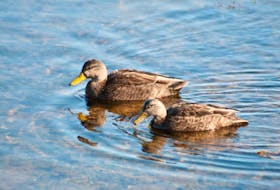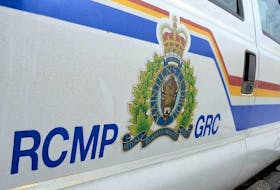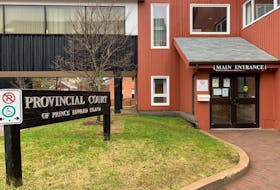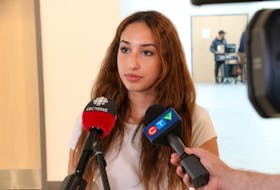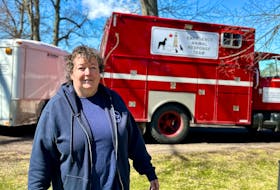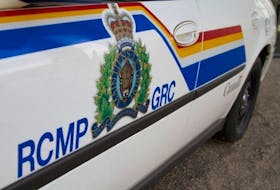CHARLOTTETOWN, P.E.I. — When Sarah Bernard started her promotions and event co-ordinator job at the Native Council of P.E.I., she knew preserving her grandparent’s and parent’s language would be one of her top priorities.
“My mother remembers asking my grandmother why she wasn’t teaching her (Mi’kmaq), and she told my mom, ‘English is what will move you forward in life, Mi’kmaq isn’t’. My mom was seven or eight years old at the time,” she said.
“But because my grandparents went to residential schools, where they were taught at a young age that it was bad for them to speak that language, they were trying to protect her.”
So, she approached her colleague, Mi’kmaq language, drumming and telling our stories co-ordinator Starr Bennett, about producing videos teaching and promoting Mi’kmaq to a wider audience.
Bernard had the idea after seeing other communities post Mi’kmaq words weekly, usually with a picture to illustrate what the word means.
She thought video would be a perfect medium, allowing members of the council to say the word and viewers to see themselves, their culture and their language represented.
“It makes them feel good about learning their language,” said Bernard.
“I think it is important to go back and learn something that has been historically taken from us.”
Want to learn some Mi’kmaq? Here are some words and phrases you can use:
- Kwe’: Hello
- Me’tal-wuleyn?: How are you?
- Ni’n teluisi: My name is
- Wela’lin: Thank you
- Welta’si: I am happy
- Mekwe’k: Red
- Mniku: Island
As the videos gain popularity, Bernard said they will be building new partnerships with other Indigenous organizations, artists and businesses to help produce more videos.
So far, there has been a large demand for more videos, said Bernard, and she thinks it is because of their incorporation of fun into reclaiming the language.
“It is really awesome because a lot of people want to really get involved and not just with Mi’kmaq language but other Indigenous languages like Ojibwe and Mohawk,” she said.
“As long as someone is willing to learn, in my opinion, that is one of the greatest things you can show your community.”
For Bennett, reclaiming the Mi’kmaq language was not solely for the children of First Nations communities but for the adults as well.
“It is a huge healing process, learning our language. It shows how strong and resilient we are as a community and as people,” she said.
Bennett explained that not every person in the community is able to speak fluent Mi’kmaq.
The goal of the videos is to encourage people to speak words little by little, starting small and eventually taking on larger phrases and sentence structures.
Here are some fast facts about the Mi’kmaq language:
- There are 13 letters in the Mi’kmaq alphabet.
- There are different dialects of Mi’kmaq that centre around the Nova Scotia and New Brunswick regions. P.E.I.’s dialect falls somewhere in between.
- Mi’kmaq is spoken in 25 communities across Atlantic Canada, Newfoundland and Labrador, Quebec and the northeastern United States.
- Mi’kmaq is a threatened language, according to the Endangered Language Project website, with 8,145 speakers worldwide.
Bennett learned the language from her grandmother, who was a residential school survivor.
Hearing her grandmother’s story, Bennett was motivated to seek out elders from around the First Nation communities on the Island.
Since producing several videos on Facebook, Bennett said there has been a groundswell of support for more videos, exploring the language through conversation and story.
Bennett said the videos give community members a sense of support and opportunity to understand their culture and who they are.
Bennett and Bernard are planning on putting videos out on YouTube and creating a channel for people to watch and discover.
“It brings up a lot of the past and scars for people,” she said. “Learning one word, at a time, makes such a big difference. It really does."
The Native Council of P.E.I. Mi’kmaq language video can be found on its “Native Council” Facebook page. For anyone interested in learning more, the L’nui’suti app is available on Android and iOS devices.
The council also has a Mi’kmaq language online resource manual on its website at ncpei.com.

